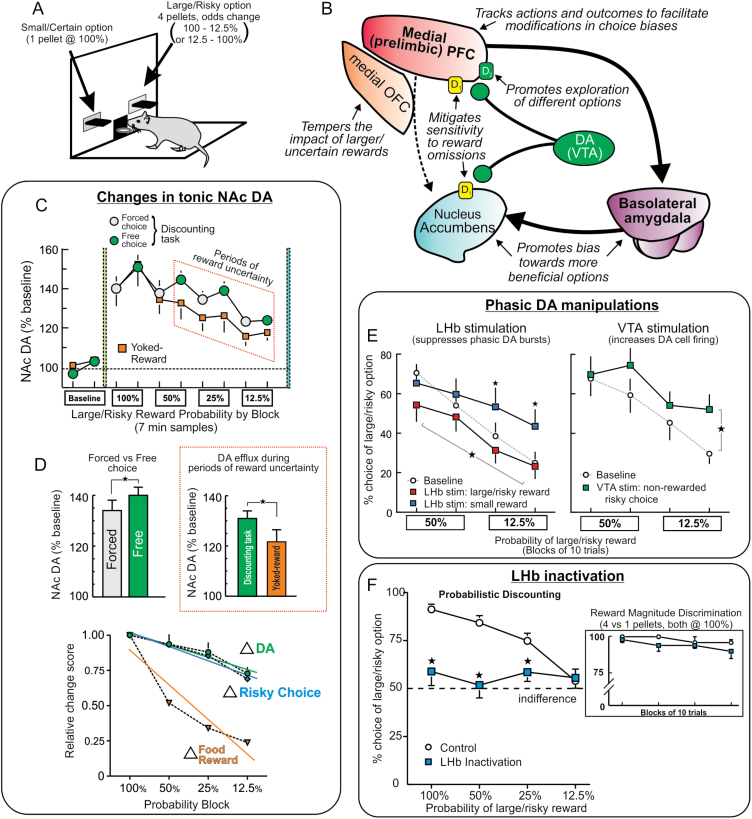Fig. 1.
(A) Depiction of the probabilistic discounting task used to asses risk/reward decision making in rodents. (B) Summary of the dissociable functions of cortical, limbic, and striatal nodes within DA circuitry in regulating probabilistic discounting, as inferred by inactivation and circuit disconnection studies. (C) Fluctuations in tonic levels of NAc DA (measured with microdialysis) associated with risk/reward decision making. Gray and green circles correspond to DA levels obtained during forced- and free-choice portions of each probability block, and squares represent data from animals that received rewards delivered passively on a yoked schedule. Highlighted region indicates portion of the discounting task associate with the greatest amount of reward uncertainty. Adapted from.30 (D) Tonic DA within the NAc was higher during free choice vs forced choices periods of the task (left), and during periods of greater uncertainty during decision making relative to rats receiving food on a yoked schedule (right). Changes in tonic NAc DA also corresponded closely to changes in choice behavior, but not reward availability (bottom). (E) Suppression of outcome-related phasic DA signals via LHb stimulation altered choice biases. LHb during receipt of larger or smaller rewards (left) shifted bias towards the alternative option. Conversely, inducing phasic DA burst in DA activity non-rewarded risky choices (via VTA stimulation, right) increased risky choice. Adapted from.43 (F) Inactivation of the LHb induced a massive disruption in decision making, causing rats to be indifferent to either option irrespective of their relative value. However, these manipulations did not affect choice during simpler decisions when choosing between smaller vs larger certain rewards of equal costs (inset). Adapted from.44 For all figures stars denote significant differences at P < 0.05.

